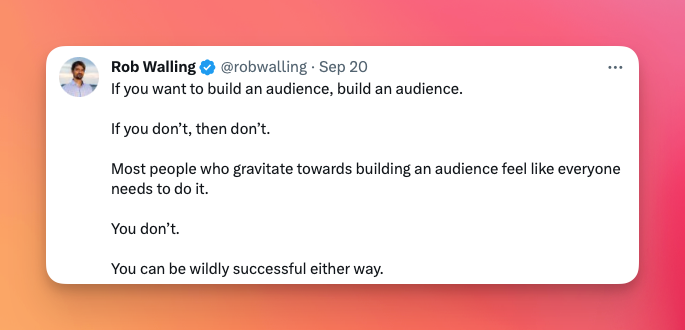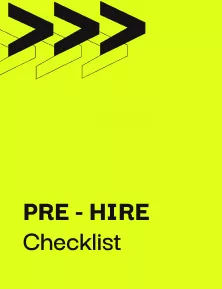Struggling to Build an Audience Before You Have a Product? You’re Not Alone as a Founder
Many founders feel immense pressure early on to build a large audience and customer base before they even have a product to offer. After all, isn’t developing an engaged community essential to startup success? Shouldn’t you be trying to build a small army of loyal followers eagerly awaiting your initial product launch?
It turns out this conventional wisdom doesn’t always ring true. Building an audience first isn’t necessarily the right initial move for every founder.
In this post, I’ll share my perspective on:
- When building a pre-launch audience makes sense
- What to do if you don’t have a MVP yet
- Actionable tactics for identifying and engaging your ideal customers
Let’s rethink startup audience building strategies.
When Does Building a Pre-Launch Audience Work Best?
Generally, building an audience in advance tends to be most effective for founders creating service-based businesses or online courses. In these cases, your personal brand, expertise, and content are the product. Your audience is inherently interested in engaging with you.
However, this approach can backfire for founders creating a SaaS product, mobile app, or other technology solution without an MVP to showcase yet. You may end up trying to peddle vaporware, struggling to garner genuine interest.
So before investing heavily in audience building, ask yourself two key questions:
- What core problem am I solving?
- Do I have an MVP or prototype to demonstrate?
If you have a working MVP that solves real pain points, even if minimal and unpolished, then focusing on audience building likely makes strategic sense. You can initiate genuine conversations around your solution and how it improves on the status quo.
But if you still lack a tangible product demonstrating value, audience building for its own sake can become a hollow vanity exercise. You risk trying to manufacture interest in a hypothetical solution without proving substantive utility.
So what should you do if you need more time to develop your MVP? Here are my recommendations…
If You Don’t Have an MVP Yet, Do This Instead
Rather than attempting to recruit followers to an illusory promised land, go directly to the source — where your potential customers already congregate.
Your energy is best spent not on building an audience per se but identifying who your audience is and what they truly need. Going to their existing communities allows you to listen and learn, gathering intel that will maximize your future product-market fit.
Here is a game plan to follow if you’re early-stage:
- Find where your potential users already spend time online by researching competitors. Identify customer logos, community members, YouTube commenters, support forums, etc.
- Join these communities and simply listen at first. Lurk on Slack channels, subreddits, Facebook groups. Understand pain points and desires.
- Engage in genuine conversations. Ask questions. Share your vision for a better solution and get candid feedback. The goal here is not promotion — it’s building empathy and trust.
- Use landing pages and waitlists to start gathering interest from potential future users. Make it clear you’re working on a solution and want to learn more about their needs.
- Leverage surveys and polls to get direct input on features and UI from prospective users. Let real data guide your product design decisions.
- Refine your understanding of your ideal customer profile. Analyze behavioral data and trends to pinpoint where your solution would bring the most value.
Notice the key difference in this audience building approach:
The emphasis is not on aggregating vanity metrics like email subscribers or Twitter followers. It’s about identifying and engaging the specific users who stand to benefit most from your product.
This process builds the understanding required to serve your future audience well. You uncover the needs and problems they want solved instead of pushing solutions in search of a problem.
Once you have an MVP with demonstrable utility, you can leverage the customer intelligence and relationships cultivated in this process to start accelerating growth.
Tactics for Truly Understanding Your Audience
As your product matures and you prepare to scale, doubling down on audience intelligence gathering remains crucial.
Some effective tactics include:
- Segmenting your user base — identify your highest value users indicative of your ideal target customer. Offer incentives in exchange for user interviews.
- Running surveys and polls to gauge interest in potential new features or updates. Listen to what your users want next.
- Using audience intelligence tools like Bombora and Sparktoro to analyze the demographics, interests, and behaviors of your current and prospective users.
- Continuing to engage directly in communities and forums where your audience spends time. Pay attention to themes and pain points.
- Building feedback loops allowing users to shape your product roadmap. Facilitate ongoing transparent communication.
Remember — truly understanding your audience is not a one-and-done effort. It requires continually connecting with customers and refining your knowledge.
Resist the temptation to play the vanity metrics game of chasing hollow follower counts. Instead, develop genuine empathy for the people your product serves. Building an authentic relationship with your users will fuel sustainable growth.
The Takeaway
Here are the key points on strategically building your startup’s audience:
- Attempting to manufacture an audience before you have a product to offer can backfire, resulting in misguided efforts.
- If you have an MVP demonstrating concrete utility, audience building at that point can make sense and be productive.
- If you’re pre-product, focus on identifying and listening to your future users — where they congregate, their pain points, what they want solved.
- Once you can offer a solution to real problems, you will naturally attract an audience interested in your product’s value proposition.
As as the great Rob Walling said:

Don’t let undue pressure to play the audience building game lead you astray early on. Stay focused on developing genuine empathy for your ideal customers, and crafting a product that meaningfully improves their lives. If you solve real problems better than alternatives, your audience will follow.
Building a startup is an iterative process of constant learning and refinement. Stay nimble, design with users’ needs in mind, and don’t get discouraged. By focusing on solving the right problems for the right people, you’ll find your audience and eventually achieve product-market fit.
Wishing you the best on your journey!
Elom is an end-to-end growth marketer with 12 years of experience driving growth and revenue for impact focused companies. He previously worked at high-growth startups like Uber and Worldremit and consulted for early-stage startups like Bristle Health, Gradia, LiliumX. He is obsessed with all things startups, growth marketing and AI.


